The Shape of Life
By Sophia Roosth
The ancient Earth was profoundly alien. How do we distinguish between the living and the nonliving in the fossil record?
The ancient Earth was profoundly alien. How do we distinguish between the living and the nonliving in the fossil record?

In September 2016, Nature reported that 3.7-billion-year-old putative stromatolites had been discovered in Greenland. Stromatolites are somewhat like ancient fossilized coral reefs—if those reefs had been built by microbes rather than coral. They are one of the most easily identifiable types of evidence of life on early Earth. Nonetheless, many scientists were incredulous: Although the geobiologist Abigail Allwood wrote that these fossils exhibit characteristics that “are fairly credibly hallmarks of microbial activity,” geomicrobiologist Roger Buick fairly rolled his eyes, remarking: “I’ve got 14 queries and problems that need addressing before I’ll believe it.”
Last spring, geobiologist Dominic Papineau and colleagues reported that they had identified fossilized microorganisms in iron-rich rock in Quebec that is 3.77 to 4.28 billion years old. They found hematite tubes and filaments, whose appearance is similar to that of microorganisms that today live in hydrothermal vents. Others dismissed their findings as dubiofossils, a term that the geologist Hans Hofmann coined in 1972 to describe controversial fossils. Fossils, Hofmann wrote, have been proven to be biological; pseudofossils resemble life but are inorganic; dubiofossils (also known as Problematica or Miscellanea) are equivocal. No one is sure whether the hematite tubes and filaments are ancient petrified organisms or not.

Matthew Dodd, Dominic Papineau/UCL
For centuries, since long before biology coalesced as a discipline in the early 19th century, scientists have struggled to understand what constitutes life. Millennia ago, Aristotle’s Scala Naturae (ladder of being) arrayed nature on a continuum that advanced in perfection from rocks to humans (the Catholic Church crowned that ladder with God and the angels, but Carl Linnaeus quietly removed them from his own taxonomy). The 17th-century naturalist Athanasius Kircher believed that vitalism was impressed in different substances, with mineral forces forming some fossils in an attenuated process similar to the growth of plants and animals. German Romantics of the 19th century such as Novalis (the pseudonym of Friedrich Leopold, Baron of Hardenberg) and Johann Wolfgang von Goethe were captivated by caves, and thought that the same individuating forces (Triebkraft) generating crystals climaxed in humans. Life itself did not exist. All was organic.
Today’s textbooks teach high school students that life is marked by specific capacities—reproduction, metabolism, adaptation, self-organization, growth. But biologists and other scientists are less resolute about what makes life unique. In 1943, Erwin Schrödinger answered the query “What Is Life?” as a physicist—it is a negative entropic system, like any other. Such thinking influenced mid-century molecular biologists, who borrowed from cybernetic theory to think of life as signaling servomechanisms and homeostats made up of molecular “information.” DNA is still called a code for a reason. At the close of the 20th century, different scientists also defined life according to chaos theory, thermodynamics, and other physical processes. Computer scientists believed that they could generate artificial life on a computer.
Nothing visibly distinguishes the vital from the nonvital when looking for ancient life. Simply put, the search for ancient life is no longer a search for ancient lifeforms.
Geologists examining fossils in rocks help us to gain purchase on the conundrum of what constitutes life by identifying its remains. For relatively recent fossils—think dinosaurs—the answer is straightforward. Although they are extinct, their bodies look much like extant organisms: They are bilaterally symmetrical, bearing notable features such as skeletons, teeth, and tails. But life was altogether different before the Cambrian explosion 539 to 541 million years ago when, in an evolutionary paroxysm, most of the animal body forms we recognize today suddenly appeared. What, then, of the remains of first life-forms, those that lived and died on an Earth almost entirely unlike our own, at a time before continents accreted, when sulfurous seas stretched across a young planet beneath a pale Sun in an atmosphere devoid of oxygen, when tides surged and months lasted a mere 20 days? How would one recognize fossils that are 2.5 to 3.9 billion years old?

Allen Nutman/Sprinter Nature
This is one of the questions driving geobiology, a discipline that originated in the mid-20th century, but which had precursors in older fields, such as paleontology, geology, and the life sciences. The big presumption of geobiology is the notion that Earth and life are mutually informing forces, and that our planet has changed in concert with the evolution of life. The search for fossils on early Earth, a planet that was in many ways profoundly different from Earth today, resembles efforts to figure out what life might look like on Mars, icy moons, and exoplanets. Such problems are not new. In the mid-19th century, naturalists debated whether a strange entity named Eozoön might have been the first life-form; geobiologists setting the guidelines for research in their new field hotly debated how to sort real fossils from lifelike imprints in stone. Today, geobiologists’ work also helps us to think over how life on other planets might be identified.
A little-known series of geological discoveries in the mid-19th century first suggested that there might be a longer history of paleontology, one that reached deep into Earth’s antiquity, even to the origins of life itself. In 1858, the rock beneath the Cambrian stratum was not called Precambrian; it was simply Azoic, because no one believed that life could be found there. Yet that same year, a collector for the Geological Survey of Canada found something curiously lifelike in Azoic limestone in the Laurentian stratum. John William Dawson, a former student of Charles Lyell and principal of McGill University in Montreal, examined the rocks and described them as “peculiar laminated forms, consisting of alternate layers of carbonate of lime and serpentine, or of carbonate of lime and white pyroxene.” In On the Origin of Species (1859), Charles Darwin noted (in what is now known as Darwin’s Dilemma) that, if his theory of natural selection were correct, the fossil record should show organisms that lived “before the lowest Silurian stratum was deposited.” Following Origin’s publication, scientific debate over the existence of originary fossils was volatile. Yet finding them proved difficult—if Darwin was right, then where were they?

Mark A. Wilson/Wikimedia Commons
Dawson was an anti-Darwinist, but he recognized the patterns he saw as undoubtedly organic—he believed them to be the skeletal remains of giant foraminifera (single-celled organisms that grow hard external shells). In arguing that this rock was truly of organic origin, Dawson focused on what he termed the fossil’s “beauty and complexity,” noting a series of microtubules that he was certain could not have been formed by purely physicochemical means. In a patriotic flourish, standing before the Natural History Society of Montreal in 1865, he named the organism, which he believed to be the progenitor of all life on Earth, the “Dawn Animal of Canada,” or Eozoön canadense.
Dawson allowed the Dawn Animal to speak for itself to campaign against natural selection, because it had not changed for millennia. In Life’s Dawn on Earth (1875), he wrote:
I, Eozoön canadense, … found myself growing upon the sea-bottom, and know not whence I came. I grew and flourished for ages, and found no let or hindrance to my expansion, and abundance of food was always floated to me without my having to go in search of it.
Eozoön was a pliable discovery. If you were a geologist or naturalist in the 1860s, whether or not you believed in Eozoön, it was useful to bring it up in an argument. If Eozoön was an Ur-animal, then perhaps it was the first of Darwin’s noted missing pages in the fossil record. Or perhaps, if between Eozoön and the second-oldest fossils was but a silence of millennia, then it could be evidence against natural selection: Perhaps creatures had stayed much the same, or arose multiple times, but never evolved.
Pseudofossils resemble life but are inorganic; dubiofossils are equivocal.
Much to Dawson’s frustration, in 1866 Darwin responded to the debate over Eozoön by agreeing with him. Darwin added the following sentence to the fourth edition of Origin: “After reading [a] description of this remarkable fossil, it is impossible to feel any doubt regarding its organic nature.”
A less eminent endorsement of Eozoön came from the itinerant London obstetrician Thomas Bulmer, who offered a first-person account of Earth’s history under the pseudonym of the mystic Heykim Nabi “Cosmos.” In Bulmer’s 1879 tale, Allah visited Heykim Nabi “Cosmos” in a dream and offered him a vision of the origins of life. Among the phenomena he observed as he travelled with Allah across eons: “Protoplasms of Eozoön formed vast reefs of foraminiferous shells… in the Canadian seas, was existing a very extraordinary object, Eozoön canadensis… of such doubtful composition that it has been ascribed of mineral organisation.”
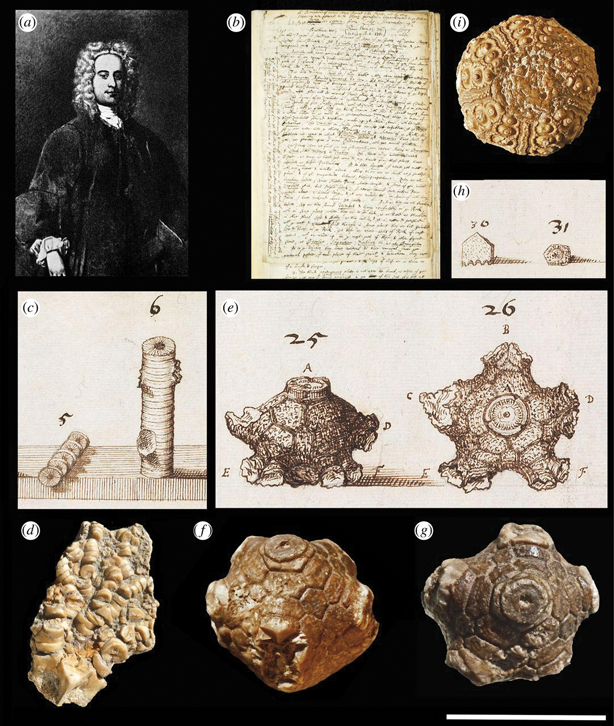
The Royal Society/CC BY 4.0
Eozoön skeptics, however, claimed that the fossil was a mere pseudomorphism, appearing to have been alive but not having been so. It was, they wrote, either “imitative” or a “trace” of life, but its form was simply curiously regular, not organic. Despite its apparent beauty and complexity, Eozoön’s popularity waned in the last decades of the century. In 1888, the journal American Geologist polled 14 prominent geologists, asking them whether “Eozoön canadense [is] of organic origin.” Only three said yes, including both Dawson (who nominated the fossil) and Charles Doolittle Walcott, who would later be credited with having discovered the Cambrian explosion in the Burgess Shale in 1914. The Eozoön controversy had run out of steam, and Eozoön was unmasked in 1894 as just another rock: limestone embellished with a bit of serpentine.
For the next half-century, few scientists pursued research into Precambrian fossils. Then, in 1953, Stanley Tyler, a mineralogist at the University of Wisconsin, discovered the Gunflint Iron. While trout fishing in Lake Superior, he spied from his boat an outcrop thick with stromatolites—giant architectonic reefs of fossilized microbes. Under the microscope, Tyler found microscopic, lifelike forms embedded in a type of silica-based rock called chert, “providing,” in his words, “a window through the Precambrian metamorphic veil.” Tyler and his colleague, the paleobotanist Elso Barghoorn at Harvard University, determined that 1.9–billion-year-old spheres and filaments had fossilized. In 1954, in the pages of Science, they made a brief announcement of their discovery of Precambrian cyanobacteria. In 1965, the paleontologist Preston Cloud independently verified Tyler and Barghoorn’s discovery, putting to rest the worry that the fossils “could have been produced by non-vital processes.” He declared them “the most ancient recorded structures which closely resemble specific living organisms.” For the first time, the geological community universally endorsed the existence of Precambrian fossils, launching modern geobiology.
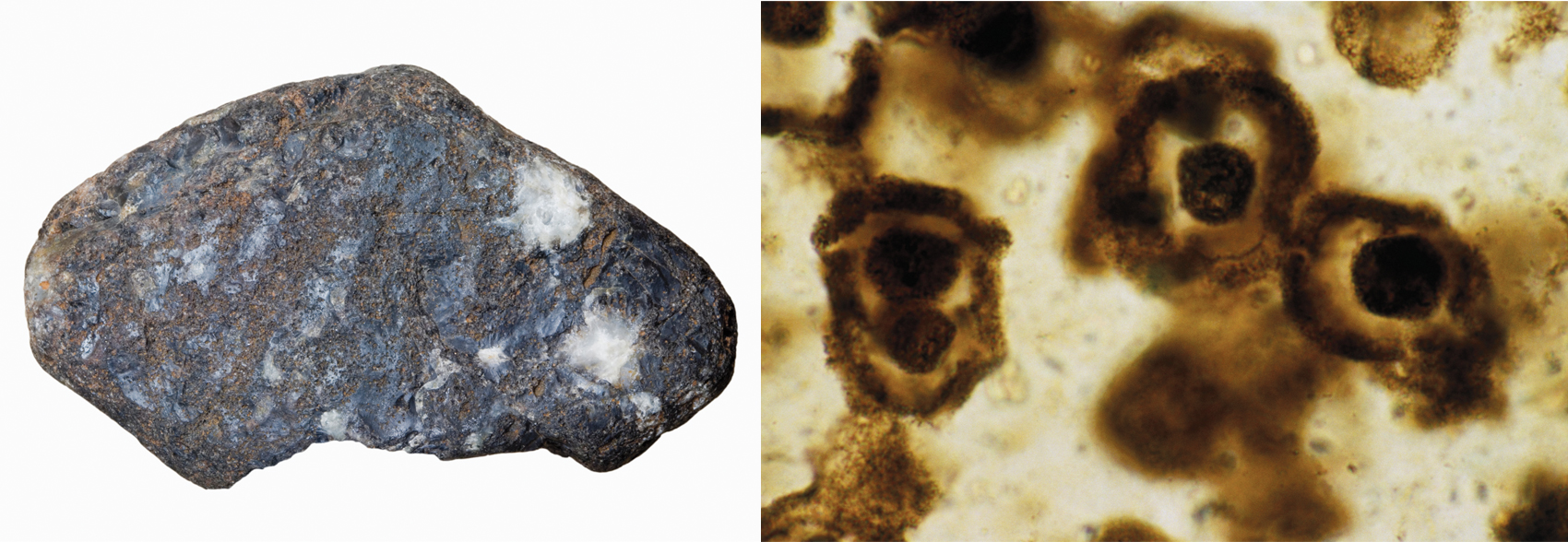
The rock sample shown here (left) comes from the Gunsmith Iron formation in Wisconsin, which was observed in 1953 to contain stromatolites. Microscopic fossilized spheres and filaments in the rock (right) are 1.9 billion years old and were definitely produced by living organisms.
Sinclair Stammers/Science Source (left); Daderot/Wikimedia Commons (right)
A Precambrian land rush ensued. In 1965, William ‘Bill’ Schopf, Barghoorn’s graduate student, identified 800-million-year-old microfossils in the Australian Bitter Springs Formation. In the 1970s, Barghoorn and another graduate student, Andrew Knoll, discovered 3.4-billion-year-old fossilized bacteria in Australia. Suddenly, ancient life was thickly salted beneath our feet. If, in the 19th century, complexity indicated life’s form, by the 1970s scientists saw that simplicity distinguished the first life-forms. More often than not, fossilized microbes were spheres or filaments, which could readily be mimicked by bubbles, crystals, and other inorganic artifacts. A controversy, literally about the shape of life, lay in wait.
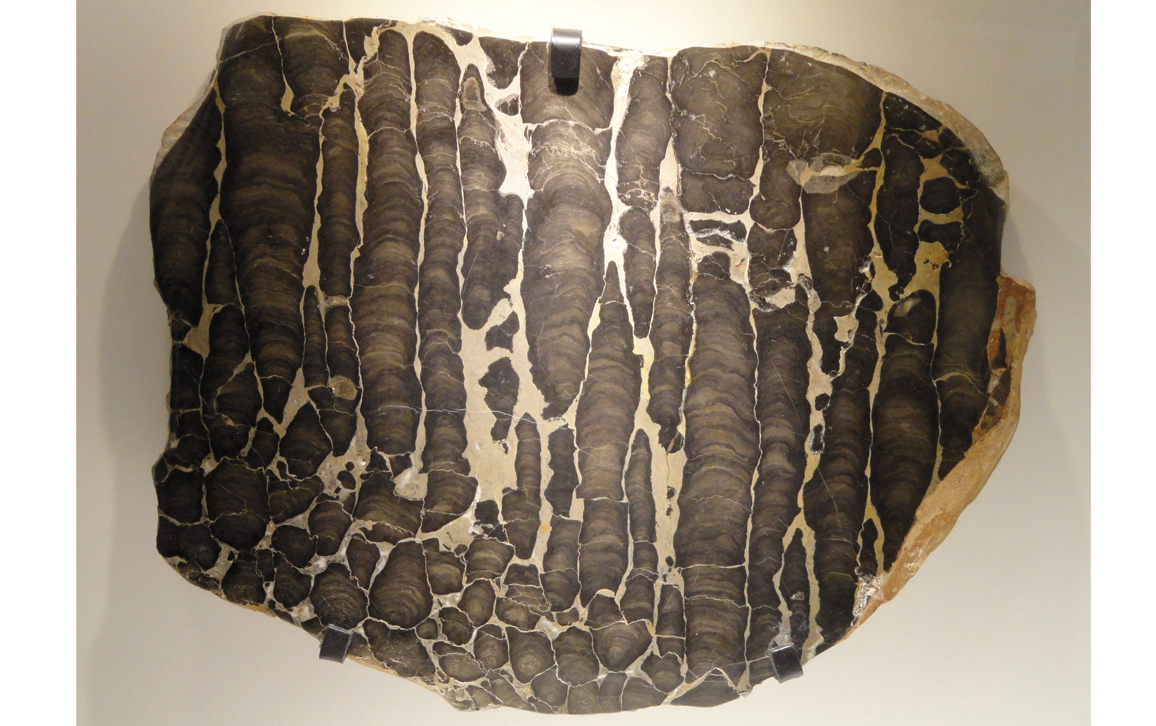
Science Stock Photography/Science Source
In 1979, members of the Precambrian Paleobiology Research Group (PPRG) embarked on fieldwork in the now-famed Warrawoona Group near North Pole in Western Australia. In 1980, they published in Nature their discovery there of Archean stromatolites—then the oldest known fossils by more than 500 million years. A few weeks before the article appeared, however, Stanley Awramik, a leading geobiologist, contacted the PPRG to report that he had found microscopic organic filaments and spheroids in the same rocks. Awramik prepared several articles announcing that his discoveries were in fact the oldest known signs of life on Earth. Roger Buick, who had studied the North Pole area and was initially a coauthor on Awramik’s manuscript, remained skeptical enough about these oldest life-forms that he withdrew his name from publication. Science then refused to publish the findings, which were later reported elsewhere, followed by a series of damning refutations by Buick. Asking “at what level of morphological complexity can an object be considered an undoubted microbial relic?,” Buick concluded: “No universally acknowledged microfossils have ever been found in Archean rocks.”
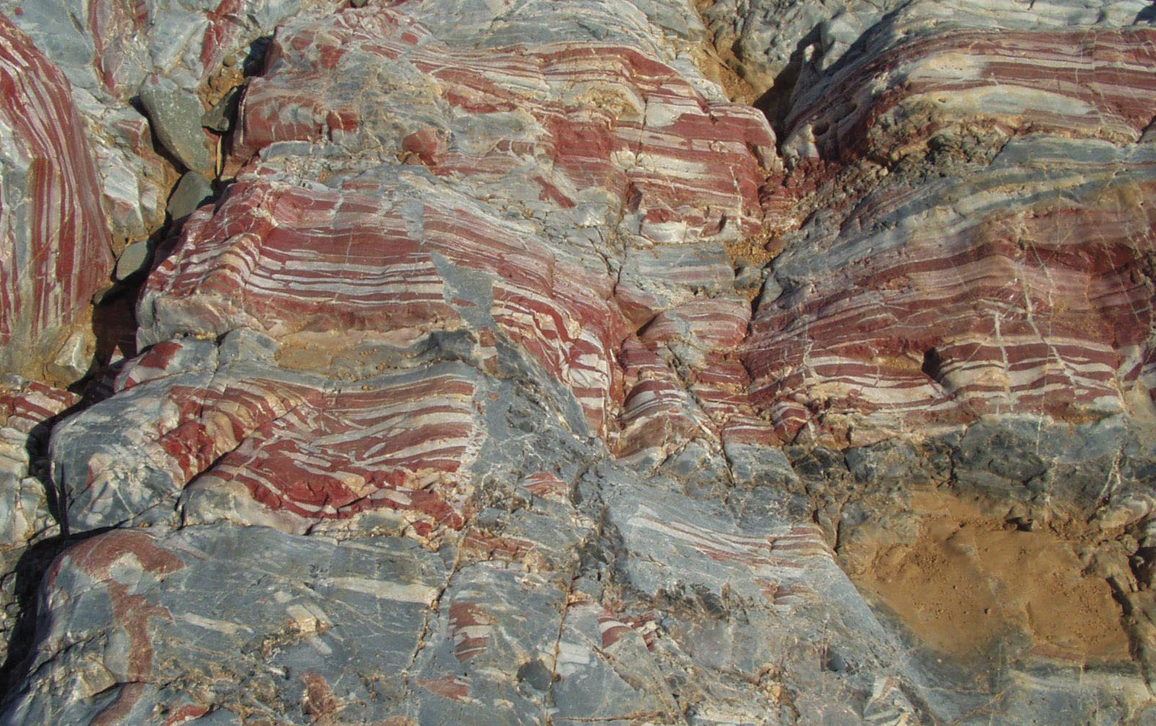
Penn State
Schopf, the PPRG’s founder, soon reported that the Warrawoona fossils were of doubtful provenance, citing problems of site-specificity and replicability. Luckily, Schopf happened to have Warrawoona fossils of his own. He claimed that these microfossils definitively proved not just that microbial life teemed as early as 3.46 billion years ago, but that it was photosynthetic, a full billion years before the next-oldest evidence of photosynthesizing microbes. In a series of papers that appeared between 1986 and 1993, Schopf published his evidence.
Schopf’s work did not convince everyone, least of all the geologist Martin Brasier at the University of Oxford. Brasier reported that Schopf had sent his graduate student Bonnie Packer to Warrawoona in 1987, and that Schopf made a press statement attesting to having discovered the oldest known microfossils before Packer had returned from the field or evaluated the samples. After examining the samples in the lab, Packer grew incredulous, and chose not to participate in further research into what were by then being celebrated as Schopf’s “Apex chert” fossils.
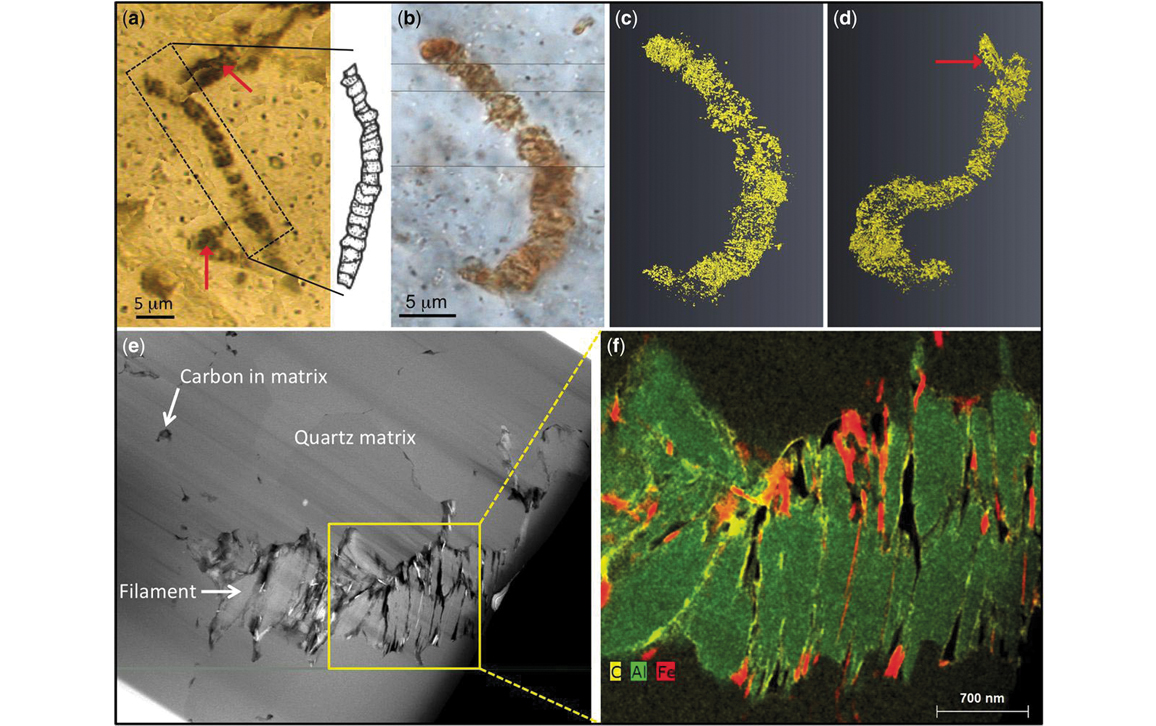
From J. B. Antcliffe et al., Geological Society, London, Special Publications, 448:19–31, 28 November 2016
Schopf’s Apex chert fossils stood in as exemplars of every dubiofossil collected by a geobiologist seeking life in the Archean Era. As Henry Gee later put it in the pages of Nature: “It is hard to tell the difference between a bacterium—especially a fossil bacterium—and a bubble.” Richard Kerr posed a similar question in Science: Are these the “earliest signs of life [or] just oddly shaped crud?” Brasier diagnosed the problem as one of deduction: For many geobiologists studying early life, “If it looks like a cyanobacterium… then the most parsimonious explanation is that it is a cyanobacterium.” Yet morphological similitude—or comparison of ancient life with extant life—was no longer enough; lifelike dubiofossils were more often than not inorganic patterns.
Citing the philosopher of science Karl Popper, Brasier offered the most conservative criterion for identifying fossilized life: “Very ancient/alien microfossil-like structures… should not be accepted as being of biological origin until possibilities of their non-biological origin have been tested and can be falsified.” Less conservative geobiologists noted that such a standard would not only disprove all fossils from the Archean but, if applied to more recent fossils, it would place them into question as well—indeed, no fossil can be definitively proven to have once lived. Scientific research hinges on falsifiability, to which Brasier’s criterion ironically does not adhere. As a rejoinder, Knoll countered Brasier’s “null hypothesis” with the more tractable “Knoll hypothesis”: “A good biomarker is something that is simply difficult (but not impossible) to make through inorganic processes.”
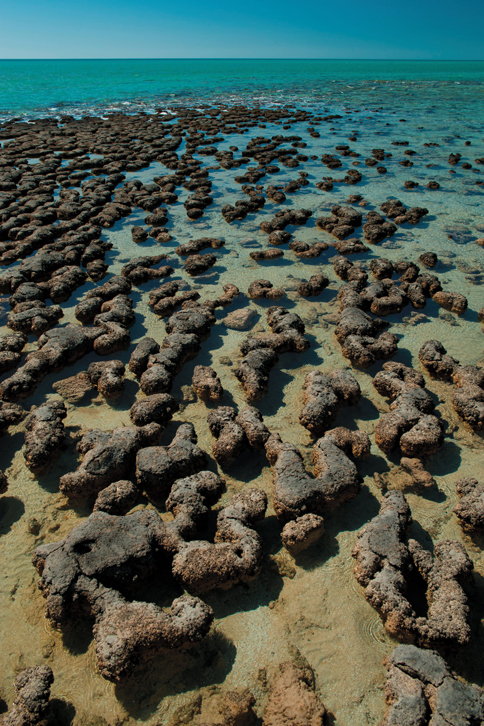
RGB Ventures/SuperStock/Alamy
The Apex chert controversy clarified for geobiologists the limits of identifying early life on Earth, helping them to formalize a series of rigorous strategies for proving the likelihood that a fossil had imprinted either early life on Earth or life on other planets. Although the majority of geologists have now rejected the Apex microfossils, papers disproving the Apex chert continue to be published. The most recent appeared last year, when biochemist David Wacey of the University of Western Australia diagnosed the contents of the Apex chert as “not microfossils, merely blobs of carbon, fortuitously arranged.” While the Apex chert was lapsing from a dubiofossil into a pseudofossil, the decades-long controversy over its provenance forced geobiologists to rethink how they assess life’s form in ancient stone.
In recent years, geobiologists have distanced themselves from morphology as a sound indicator of ancient life. To answer the question with which I opened—what do the remains of life look like?—they look a lot like all sorts of other things. Or, to turn the question on its head, lots of old things look a lot like what we expect old life to look like, whether in form, complexity, or simplicity. If once “beauty” and “complexity” were markers of life, and later geobiologists sought early life in its starkest simplicity, now neither is sufficient. Nothing visibly distinguishes the vital from the nonvital when one is looking for ancient life. Simply put, the search for ancient life is no longer a search for ancient life-forms.
When we ask where life came from and what it looks like, we are asking which qualities define the contours of life—pattern or structure, simplicity or complexity, form or information, metabolism or reproduction.
Geobiologists now focus instead on biological, geological, and mineralogical contexts, such as the surrounding paleoenvironment in which the rock lithified, signs of degradation during fossilization, analytic biochemistry, and chemical biomarkers. Such criteria, they hope, will more fruitfully differentiate, to borrow the language of the geologist John Eiler, “the oldest fossil” from “just another rock.” As geobiologists increasingly join forces with geochemists, geochronologists, stratigraphers, and geomagnetists, a diverse and stringent array of nonmorphological criteria will be utilized in concert.
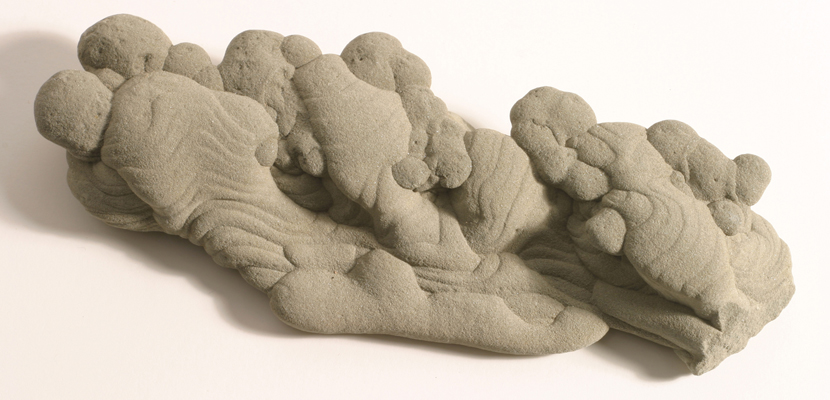
Ted Kinsman/Science Source
The problem plaguing micropaleontological research now extends to astrobiology, the search for life beyond our own planet. If geobiologists cannot say what life looks like here on Earth, what chance do they have of identifying extraterrestrial life? One irony of this tale is that Schopf, who continues to champion the Apex chert, was the same geobiologist who, at a NASA press conference in August 1996, used his own dubiofossils to cast doubt on the biogenicity of the Mars meteorite ALH84001.
“I’ll show you the oldest evidence of life on this planet,” he said in the news conference, and showed images of the 1993 micrographs of Apex chert microfossils. “These are demonstrably cellular… these are demonstrably fossils.” The criteria that geobiologists had developed to test the Apex chert dubiofossils, he insisted, must be applied to all extraterrestrial dubiofossils, and this meteorite didn’t pass his test. As Gee later summarized: “That is the name of the game for claims of life at the extremes of time and space.” No clear line demarcates fossilized life from nonlife, here or elsewhere, whether in the 1860s, the 1960s, or today.
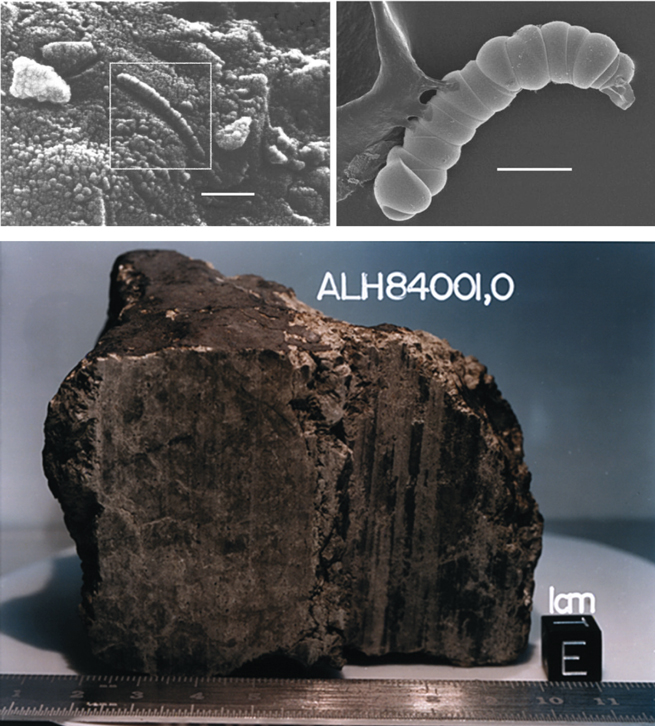
Image courtesy of Anna Carnerup/CC BY 4.0 (top); NASA/JSC/Stanford (bottom)
The questions of what life is or is not, what it does or does not look like, and how or when it did or did not arise (or how often it has arisen) are questions that researchers always pose within the context of ongoing theories and commitments—to natural selection, to paleontological conjecture, to whether life is understood as substance, process, or self-assembly. When we ask where life came from and what it looks like, we are asking which qualities define the contours of life—pattern or structure, simplicity or complexity, form or information, metabolism or reproduction. This means that life is a concept—it bears meaning and the force of signification; it carries historical baggage, philosophical expectations, and scientific framings. Life is something about which people—life scientists and others—must be persuaded. But of course, to say that life is up for debate certainly does not damn the scientists who seek it and sometimes stumble upon its wily facsimiles. On the contrary, it means that our theories of life are spectacularly lively.
The Mars 2020 mission will collect new rocks and might instigate renewed debate about extraterrestrial lifelike fossils. We don’t yet know what fantastic forms these might take, but history suggests that many Martians will be, at best, dubious.
This article is adapted from one that was published in Aeon, aeon.co.
Click "American Scientist" to access home page
American Scientist Comments and Discussion
To discuss our articles or comment on them, please share them and tag American Scientist on social media platforms. Here are links to our profiles on Twitter, Facebook, and LinkedIn.
If we re-share your post, we will moderate comments/discussion following our comments policy.